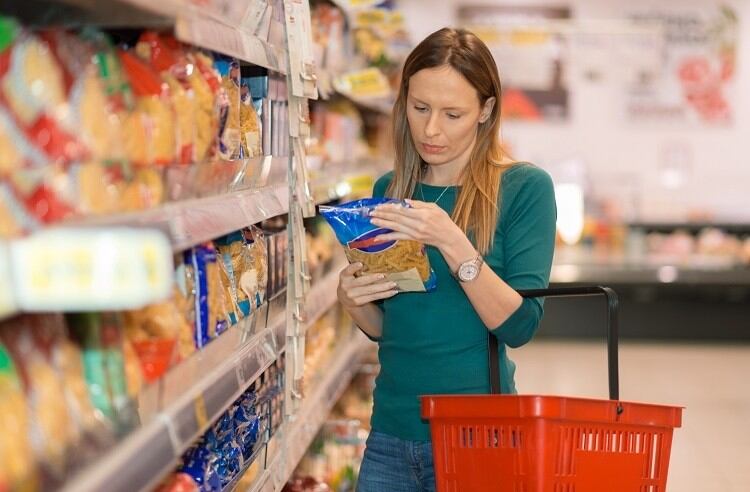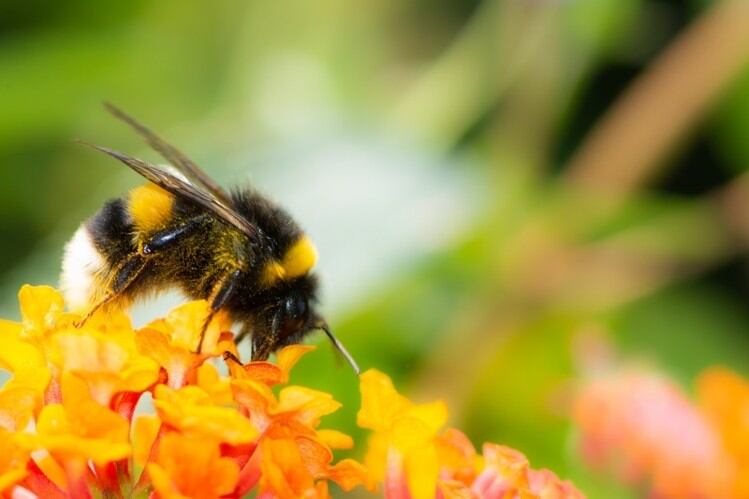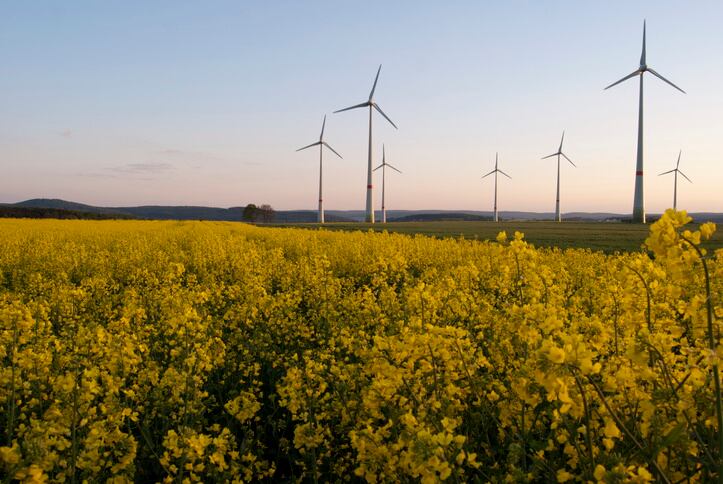ADM doesn’t own farms, but it works alongside growers to turn agricultural commodities into ingredients that it supplies to food sector customers.
“Our place in the agriculture value chain is in between the farmer and the consumer-facing customers. We are a bridge between the farm and the consumer. We don't own farms by and large, and we don't have brands on the grocery store shelf. But we're the bridge between the two,” the groups head of sustainability, Alison Taylor, explained.
This position in the supply chain – coupled with its significant global scale – allows the company to play a role in meeting emerging consumer and customer expectations around responsible food production, Taylor suggested.
“We see this as a unique and important opportunity to provide the information that consumers are looking for, with respect to: What's in my food? Where does it come from? How's it produced? Is it responsible? Consumers are trying to learn more than just health-oriented information. We see that as both opportunity and responsibility.”

Counting carbon: A competitive advantage
Alongside this shift at a consumption level, ADM has seen increased awareness around environmental footprinting from its customers – food brands – with carbon the number one topic. “I would say most frequently now customers are oriented to lower carbon,” the sustainability expert reveals.
ADM has therefore come to view the work it is doing on sustainable sourcing as offering a competitive advantage across its business, which spans origination, processing of oilseeds and carbohydrates, and nutrition.
“We like to think of it that way. Going back to that unique space in the value chain, for us to be able to marry the sustainable supply chain to an innovation, like an alternative protein or an alternative to petroleum that's bio-based, to be able to bring that full value chain to the end user is a unique ability that we have.”
With annual sales of around US$65bn and more than 480 crop procurement locations serving customers in 200 countries, ADM is able to leverage its global reach and significant scale as another competitive point of difference.
“We also have scale. We can move a lot. We can process a lot. We are working on the footprint of our operations and processing. That certainly is a value proposition to us and a differentiator.
“When we're talking about a larger customer that serves a global population, they need somebody who has the scale that ADM has. Particularly with the reality of climate change, someone who can pivot around obstacles in the supply chain. We are able to be a reliable supplier in that way,” the sustainability expert told FoodNavigator.
The power of regenerative ag
Acting in its capacity as a ‘bridge’ between consumer-facing businesses and the agricultural sector, ADM collaborates closely with its suppliers to build resilience and support the adoption of more sustainable practices.
It is estimated that the food system is responsible for one-third of global greenhouse gas emissions. Of this some two-thirds of the emissions come from the land-based sector, comprising agriculture, land use and land use changes.
So, how can agriculture address the challenge of carbon?
Taylor points to the power of regenerative agriculture to deliver ‘nature positive outcomes’.

“When we talk to farmers, we talk to them about the practices. You've probably heard quite a lot about no till or cover cropping and water conservation, reducing their inputs, reducing nitrogen-based and other types fertilizers. A lot of farmers are very savvy about all of these practices. Some are doing these because they want to be stewards of the environment and they know that these are practices that enable that -- also because they see that this is a way to increase the resilience of their farm.”
Regenerative agriculture can be used to turn soil into a carbon sink. Over a longer timeframe, this improves soil health and productivity through carbon sequestration, with the potential to reduce reliance on chemical fertilisers, boost resilience to water stressors and increase yields.
“We're sequestering carbon in soils. We're making those soils better than they were and making those soils healthier than they were… These types of practices are helping [farmers] to increase the efficiency in their farms. The can lower cost if they lower inputs, for instance. If you have a cover crop in place and there's a major flood, it's much more likely that your soil remains intact and you’ll have a much more intact crop later as well.
“These are practices that we aren't going to claim farmers don't know a lot about, or that they're not already deploying and they're not receptive to. It is a real dialogue and for us a learning experience too. Nature positive is the outcome of those discussions.”
Farmer engagement for environmental outcomes
Nevertheless, ADM is able to work alongside and influence its suppliers, supporting the adoption of these practices. “We have the ability to educate because we've had long-term relationships with many farmers and we're a trusted advisor… We can talk to farmers about what the market's looking for, for instance, sustainable practices, low carbon scores and water conservation.”
Taylor revealed that these conversations are now also evolving towards a discussion about biodiversity, particularly through the planting of hedgerows.
“We can also now expand into that more ‘now we label it biodiversity’ conversation talking with farmers about hedgerows or maintaining borders, even planting some border vegetation that would be favourable for birds or favourable for pollinators.”

Again highlighting the company’s bridging role, Taylor says ADM is able to work with its customers to provide financial incentives for farmers to change their practices.
“We would most often be working with farmers along with a customer. So we know, and the farmer knows, that there's a market for this type of sustainable crop. Sometimes a customer wants something specific because they have their own goal that they're trying to meet. It varies with each project, but we'll have a price that we agree to pay to the farmer for being engaged in these programs. We and our downstream customer recognized they are deploying practices that are new, so there needs to be an incentive… There's costs associated with that and we want to share that cost.”
Combating land use change and deforestation
Deforestation related to agricultural commodities is an ongoing test for the food industry and its ability to build a carbon smart system.
ADM is tackling this issue in high risk areas through supply chain monitoring programmes and traceability efforts. The company leverages emerging technologies like satellite monitoring and artificial intelligence to ‘see what happens on farm’. These efforts, Taylor said, are concentrated on high risk commodities and regions, like soy in Brazil and palm in Southeast Asia.
“In Brazil, we obtain the farm boundaries. We can load those into a system that overlays that with satellite imagery. We can see what's happening on a farm and ask that farmer if there's some new planting that's taken place in an area that we feel a little uncertain about. That's a tool that helps us to monitor and then engage that farmer. And that's really how we look at it is, is through engagement.
“We have focused in Southeast Asia and the palm supply chain. We have focused in Brazil and South America, generally, in the soy supply chain. In Brazil, we are 100% traceable to our direct suppliers throughout the entire country… We monitor our own supply chain, but also collectively through what's called the Amazon Soy Moratorium,” she explained.

Engagement is crucial to combat supply chain issues like deforestation and on-board producers to adopt sustainable practices. Taylor pointed to the work ADM does through its corporate social investment program, ADM Cares, as an example of this work in action.
“We have a philanthropy organization called ADM Cares which also supports a lot of smallholder efforts, including efforts that are focused on preventing malnutrition… We've been working with farmers in Kenya and Ethiopia to understand what nutritious crops are - not just cash crops but crops for consumption - and to better understand how to sustainably farm those so that they're resilient to the threats of climate change faced in that region.”
The food system in an era of climate change
Looking to the future, Taylor said that ‘big challenges’ are going to be posed to food production, particularly as we come to feel the nature and ‘unpredictability’ of climate change. In this future scenario, she sees a role for ADM to help secure supply lines.
“When we look at mapping and models that show large swaths of the world underwater, we may be the size and scale to be able to move to where some crop can still be grown. How do we assist that? And how do we facilitate that? What's our role and responsibility moving this nutrition around the world?”
She also believes ADM’s size and scale means it has a duty to help tackle global hunger and improve access to nutrition, another issue that will be exasperated by climate challenges. “Affordable nutrition is a collective issue for everybody in the agriculture supply chain. It's not all about the finicky customer, choosing among many products on a grocery store shelf. What about people who don't have grocery stores? How can we provide access to nutrition in a more affordable way?”
But the future isn’t just filled with challenges. Taylor sees opportunity to innovate for sustainable food systems. And one area she is particularly excited about is the upcycling of waste streams to allow us to do more with fewer resources.
“There's this whole huge area that I find really exciting about the innovative ways in which bio products in crops and plants can be utilized to be clothing, to be a plastic substitute, to be almost anything. There's so much more science behind that now and that's a really exciting area.”
What's next for sustainable agriculture?
Join FoodNavigator Senior Editor Katy Askew 1n September 1 at 3PM CET / 8AM CDT to learn how producers, NGOs, governments and more are working together to find new ways to ensure food security, advance sustainable development, address climate change, and safeguard biodiversity.
Hear expert insights from:
- Will Cannon, an innovative corn and soy farmer in Iowa
- Sarah Carlson, Agronomist, Practical Farmers of Iowa
- Margaret Henry, Director, Sustainable Agriculture at PepsiCo
- Greg Morris, SVP & President Agricultural Services and Oilseeds, ADM
- Debbie Reed, Executive Director, Ecosystem Market Services Consortium
Register for the event, for free, here.

